The Code.org Advocacy Coalition recently released a report called “The State of Computer Science Education: Policy and Implementation”. It summarizes much of the organizations research over the past year as it relates to computer science education access and the effects of policy initiatives to expand that access. In this post I’d like to highlight important findings from that report and how you can leverage these findings to help expand CS education in your community.
While I was not directly involved in the compilation or production of this report, I am a member of the Code.org Advocacy Coalition representing the Rural Technology Fund. I attend their meetings regularly and occasionally provide perspective on rural CS education.
CS Education Access
The bottom line statistic from this report is that 35% of schools teach CS. This is based on the 24 states where complete data was available.
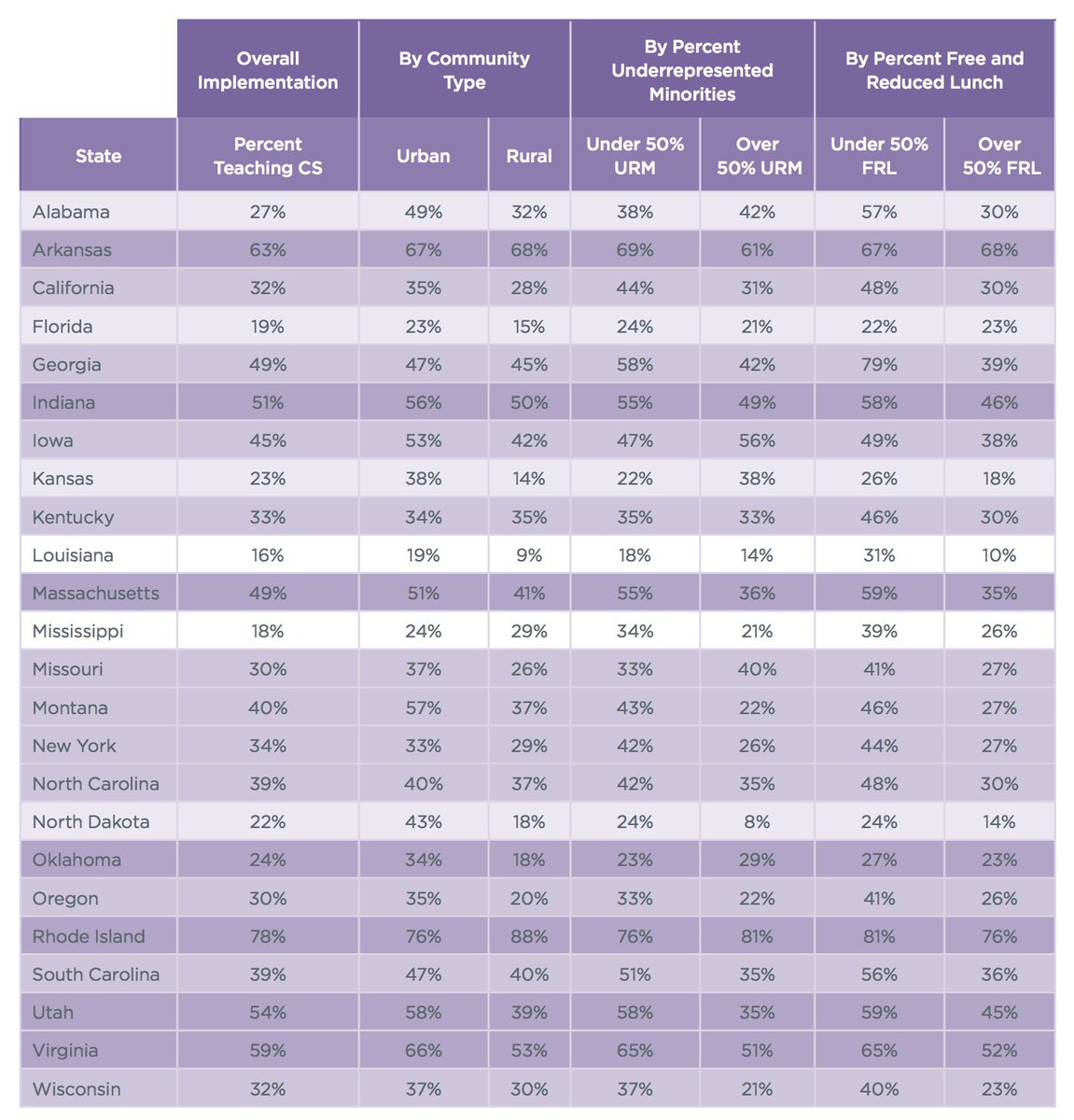
You are less likely to be exposed to CS if your school contains a high percentage of students in poverty. It should come as no surprise that this means students in
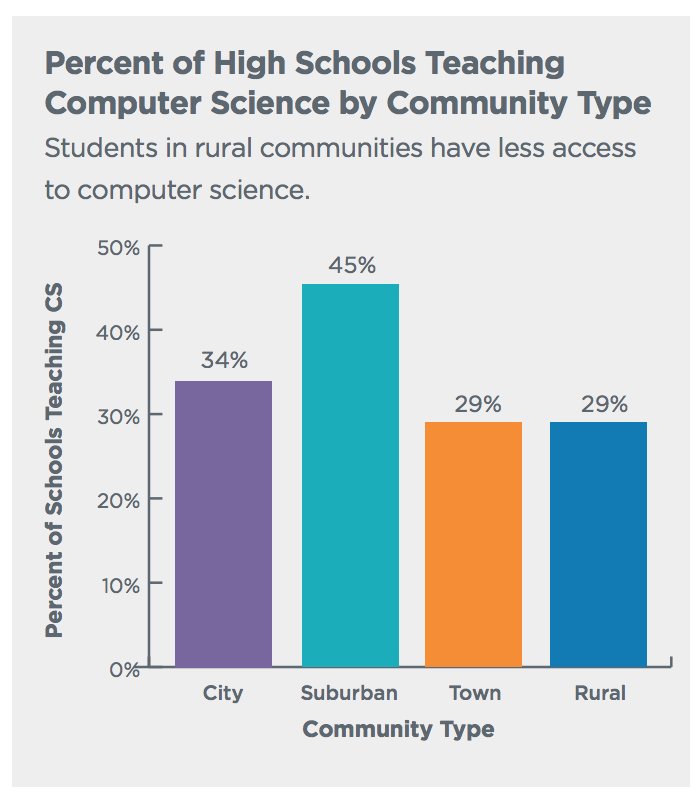
Similarly, high poverty often correlates with schools that contain a higher percentage of underrepresented minority students. These students also have less access to CS.
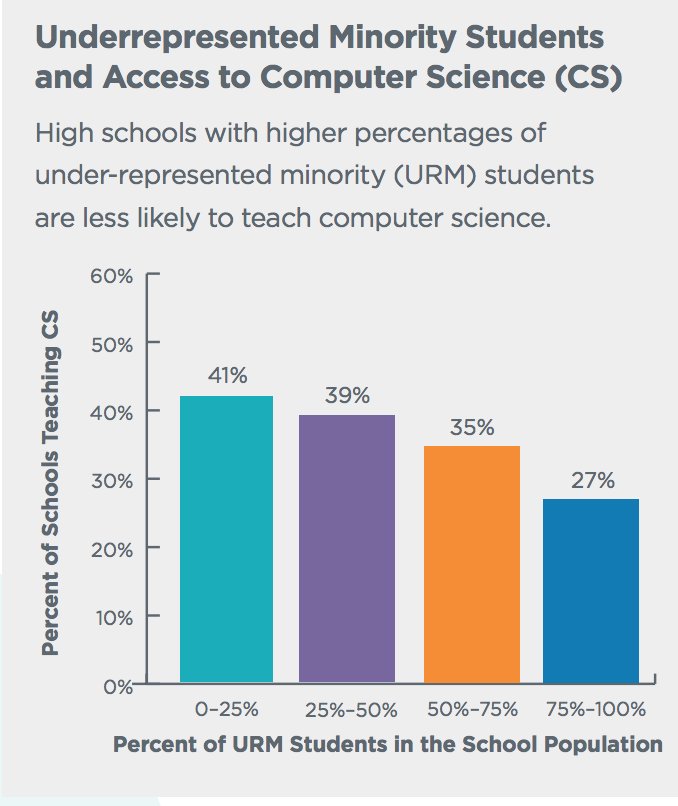
Poverty is typically tracked in public schools based on the percentage of students who are eligible for free or reduced lunch. Eligibility requirements for these federal programs are based on the income level of the students family. These statistics are public and you can search for them at the district level here: https://nces.ed.gov/ccd/schoolsearch/. You can also identify schools with a large percentage of students from low-income families (>40%) by looking for the Title 1 designation applied to the school. These schools often qualify for special funding due to this designation.
State Policy Adoption
One of the primary functions of the advocacy coalition is the establishment of
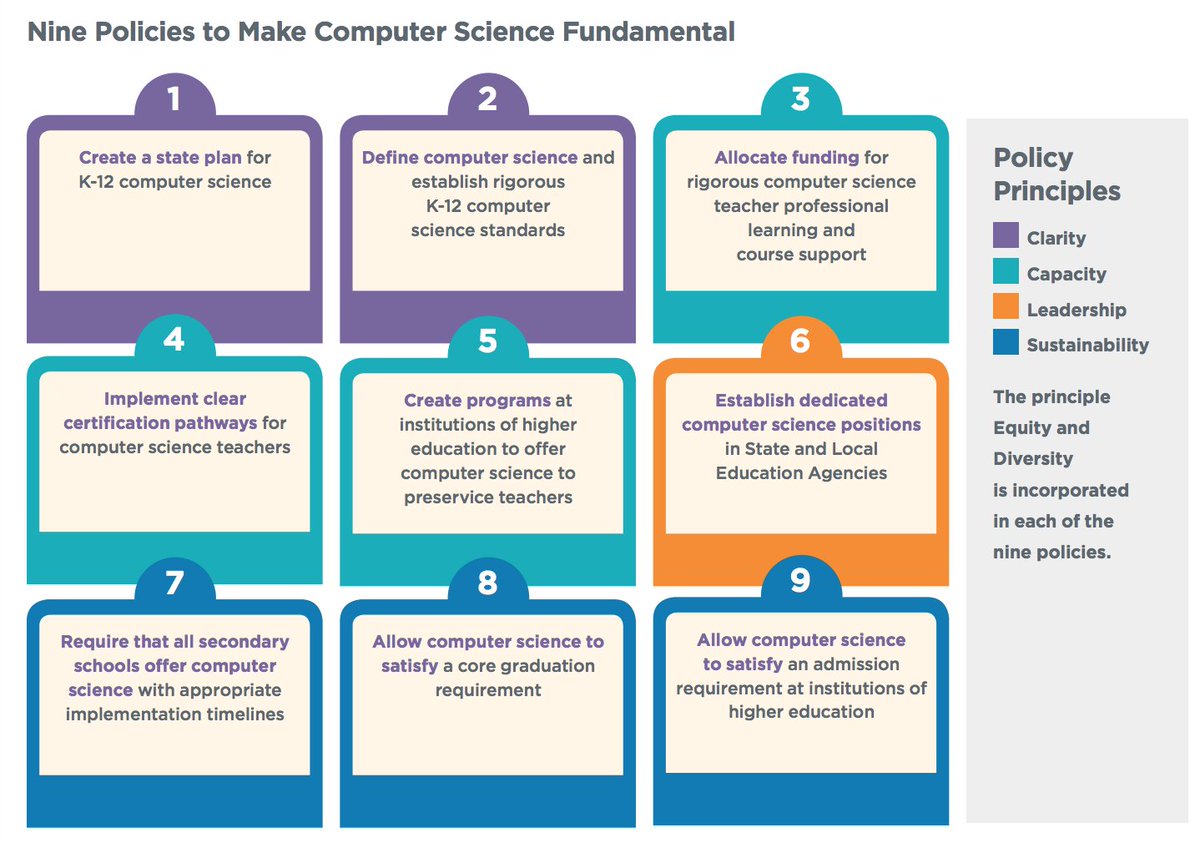
The adoption of these policies has a direct, measurable impact on CS education access. As more of these policies are adopted, access to CS education increases.
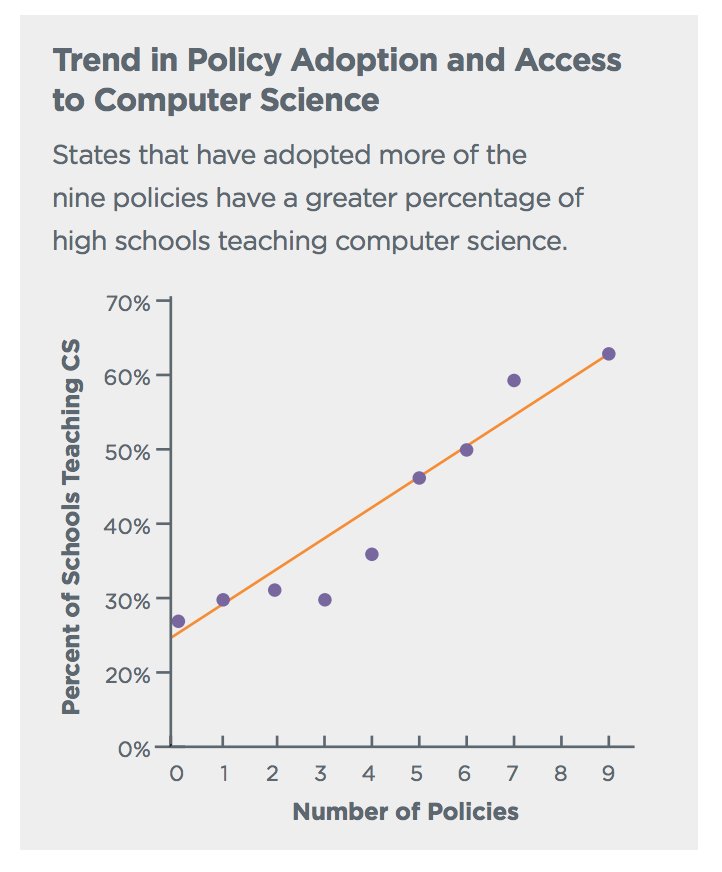
These nine policies effectively become goals and benchmarks to gauge CS education access. Perhaps the most useful feature of the report is a state-level overview of how each state is doing in relation to these goals. For example, here is a breakdown of my home state of Kentucky.
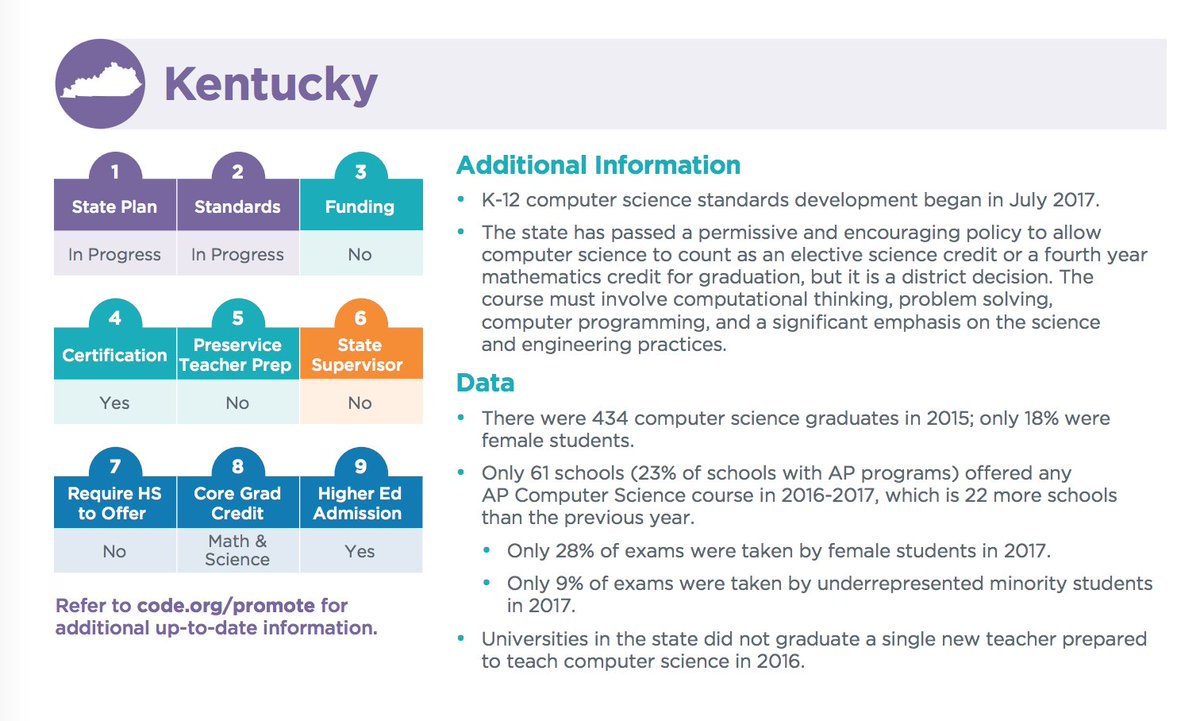
There are obvious policy deficiencies as only a couple of the 9 policies areas are currently addressed. Fortunately, the state plan and education standards are in development. These are great steps to take, but Kentucky is behind in this area.
It also struck me that “Universities in the state did not graduate a single new teacher prepared to teach computer science in 2016. “
As a state that prides itself in teacher education, Kentucky could likely be doing more to equip new teachers with the ability to teach CS right out of college. I challenge Kentucky educators who read this to raise this issue with faculty and administrators at the programs they graduated from and are affiliated with.
Based on this data, we can derive statistics about adoption in each of these policy areas:
- 22 states have K-12 computer science standards. There are resources and shared guidance on these standards at http://k12cs.org or
http://csteachers.org/standards . - 19 states have dedicated funding for K-12 CS professional development (teaching teachers). There is a correlation amongst CS access for students and funding for professional development. You must invest in teachers for them to have the necessary knowledge to teach these skills.
- 33 states have CS teacher competency certifications. Y
ou have to be able to measure the competency of teachers to share CS skills with students. Notice how states are often better at setting standards than funding teacher training to meet them. - 15 states have a requirement for all high schools to offer CS (yikes, far too low), but 39 states allow CS to count towards graduation requirements (usually math or science). The latter is often a step along the path to the former. That’s a positive sign.
Great news is that over the past 5 years there has been tremendous growth in CS policy adoption. Much of this is thanks to the work by Code.org. As a security practitioner, I’m also confident that the constant breaches making headlines also drive awareness and legislation in these areas.
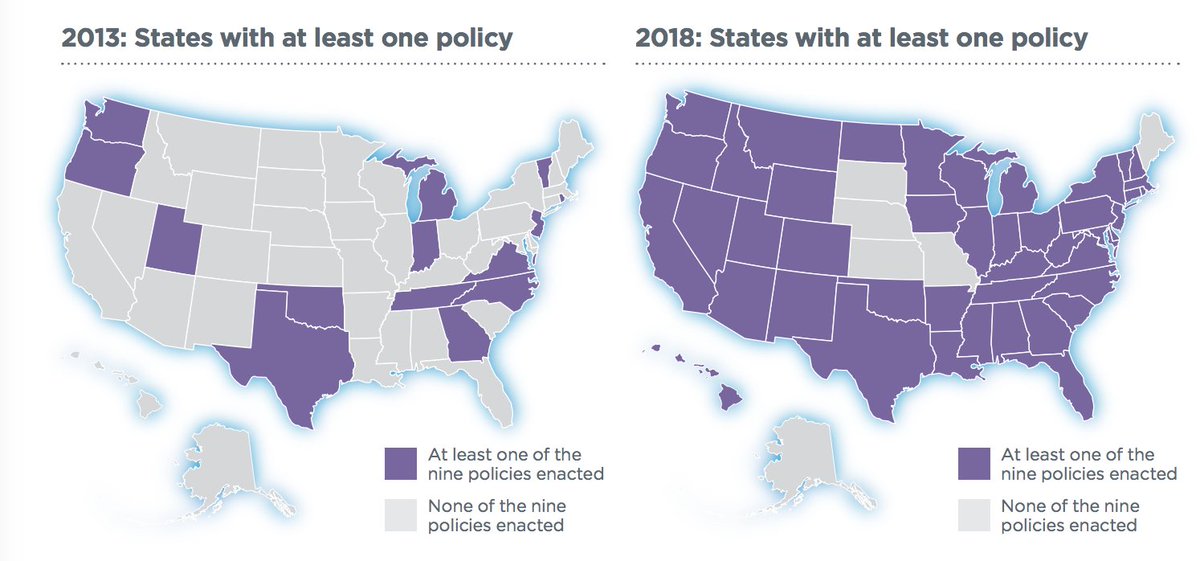
Taking Action
The best way for my readers to use this data is to take action based on the gaps in your state and

By identifying policy gaps needed to support CS access, you’re prepared to raise these issues with your elected officials. There are template letters from Code.org that you can use to communicate with them.
Remember, the local school board is also an elected position. These individuals exist to take input from the community and make sure that is represented in the curriculum and operation of the school district. Consider setting up a short meeting with your local board member to learn more about what they’re doing for CS education now and potentially discuss ways you can help. Things like:
- Help train teachers. It’s difficult for districts to find people willing to teach teachers how to educate students about CS. It’s even harder for them to find money to pay for it. Consider donating your time to this effort.
- Host an hour of code. The team at Code.org takes significant effort to produce educational materials designed to introduce students to coding. This is only one facet of CS, but it’s effective as a gateway to other CS disciplines as well. You can host an event yourself or work with others to get one going. Learn more about hosting an hour of code here: https://hourofcode.com/us. I recommend first attempting to partner with your local school district. Additional opportunity exists to partner with local libraries. The library is the new makerspace and a lot of opportunity for CS education exists in these spaces.
Conclusion
I’m proud to be associated with Code.org and the work they’re doing to expand CS access. Education initiatives are essential work, but they’re also challenging work as the seeds we plant take a long time to flourish. The data collection efforts provide useful information about the effectiveness of policies aimed at expanding CS education, and the 2018 State of Computer Science report provides an accessible look at these data leading towards actionable steps you can take to expand CS education.
Source:
2018 State of Computer Science Education. (2018). Retrieved from
https://advocacy.code.org/